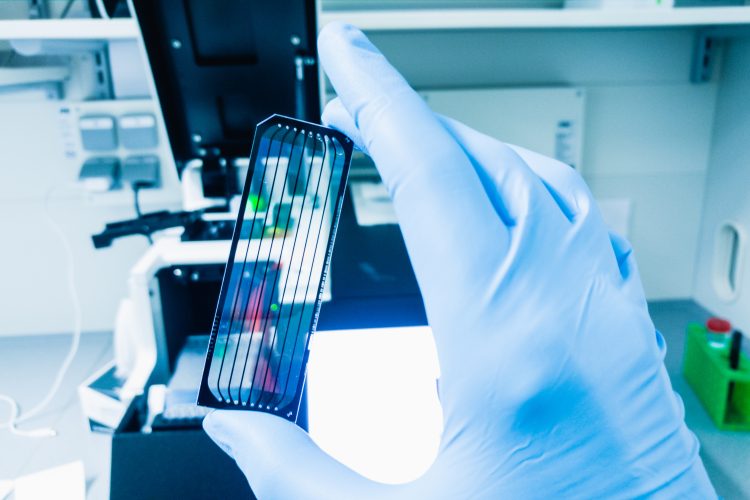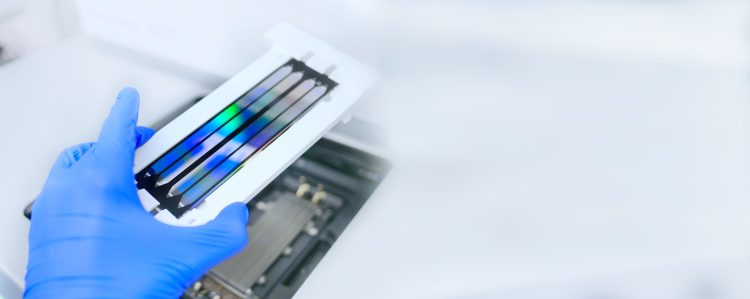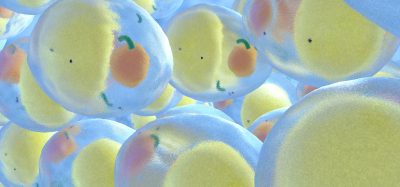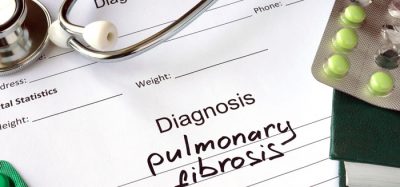NGS is evolving: collaboration and tech lead the way
Posted: 15 July 2025 | Momin Shah (Senior Genomic Application Specialist at Beckman Coulter Life Sciences) | No comments yet
Next-generation sequencing (NGS) is advancing fast – and it’s not happening in isolation. Strategic partnerships and automation are streamlining workflows and reshaping what’s possible in genomics research.


The next-generation sequencing (NGS) market is experiencing rapid growth, which is expected to continue for the foreseeable future. Research by Markets and Markets projects the market to grow from $12.13 billion in 2023 to about $23.55 billion by 2029, a compound annual growth rate (CAGR) of approximately 13.2 percent.1 Emergen Research attributes this to the advantages of high-throughput sequencing technologies and declining sequencing costs.2 This trend reflects the increasing demand for genomic sequencing in research, clinical diagnostics and other applications. The latest technologies are empowering researchers with faster, more efficient and more accessible genomic tools, leading to richer data generation and accelerating progress in areas like cancer genomics, rare disease research and infectious disease surveillance.3
To meet this demand, equipment manufacturers must forge strategic partnerships that integrate complementary chemistries with advanced automation systems. Such collaborations are crucial for streamlining NGS workflows by reducing manual intervention and enhancing reproducibility. By leveraging combined expertise in reagent innovation and laboratory automation, these alliances develop versatile platforms that optimise library preparation processes and lower the risk of human error. This collaborative approach also broadens access to cutting-edge sequencing tools, empowering smaller labs and emerging research centres to adopt state-of-the-art genomic technologies.
Such alliances are already being operationalised, yielding innovations that accelerate diagnostic research in oncology, infectious diseases, reproductive health and other critical therapeutic domains, while simultaneously advancing NGS‐driven approaches for drug discovery. Several strategic partnerships formed by Beckman Coulter Life Sciences illustrate how cooperative models and an open‐chemistry approach facilitating advances in genomics research.4
Biomarkers aren’t just supporting drug discovery – they’re driving it
FREE market report
From smarter trials to faster insights, this report unpacks the science, strategy and real-world impact behind the next generation of precision therapies.
What you’ll unlock:
- How biomarkers are guiding dose selection and early efficacy decisions in complex trials
- Why multi-omics, liquid biopsy and digital tools are redefining the discovery process
- What makes lab data regulatory-ready and why alignment matters from day one
Explore how biomarkers are shaping early drug development
Access the full report – it’s free!
Bringing in automation
Oncology is an area that has benefitted from technology partnerships. We have worked with Illumina for years to enhance genomic profiling of tumour samples, developing innovations that deliver rapid, reproducible results with minimal manual intervention. Their latest assay processes four to 24 libraries per batch and detects gene amplifications, fusions, deletions and other cancer biomarkers from both DNA and RNA inputs.5 This assay, along with several other applications, leverages flexibility with chemistry parameters and a cloud-enabled workflow platform that facilitates real-time data integration and remote protocol updates, potentially enhancing clinically relevant research workflows.


Next-Generation Sequencing (NGS) is a high-throughput technology that rapidly sequences DNA and RNA, enabling detailed genetic analysis for research and clinical use. Image credit: Elpisterra / Shutterstock (Asset ID: 1921590809)
Automating Illumina’s assays has compressed what was once an extended workflow into a three-day process powered by continuously operating robotic systems.5 These systems integrate advanced liquid handling, thermal controls and real-time error monitoring to ensure smooth operations during the runs. Although occasional manual oversight remains necessary, researchers only need to perform periodic checks during the process, significantly reducing hands-on labour.6 This enables scientists to dedicate more time to critical data analysis while enhancing consistency and reducing human error.
The findings underscored that automation improves data consistency and quality, thereby supporting more accurate diagnostics and personalised treatment strategies.
Such innovations extend their impact beyond the research lab into clinical care. For instance, a recent study at Heidelberg University Hospital in Germany demonstrated the patient benefits of automating NGS workflows.7 Researchers used Illumina assays to process nearly 3,000 tumour samples, directly comparing automated and manual protocols across eight critical performance parameters, including the percentage of aligned reads, tumour mutational burden and median exon coverage. The findings underscored that automation improves data consistency and quality, thereby supporting more accurate diagnostics and personalised treatment strategies.
In this study, the NGS workflow not only reduced manual labour but also improved key performance metrics. Specifically, the manual process required approximately 23 hours of hands-on pipetting and sample handling per run, whereas automation reduced this to just six hours, a nearly four-fold decrease.7 Using an automated liquid handling system integrated into their library preparation workflow, the lab processed 48 DNA samples and 48 RNA samples in a single run, reducing the overall runtime from 42.5 hours to 24 hours. This streamlined approach minimised human-induced variability; consequently, the automated workflow achieved a slightly higher percentage of aligned reads, from an estimated 85 percent to around 90 percent. Such improvements are critical for downstream analyses, ensuring that variant calling and diagnostic interpretations are based on higher-quality, more consistent data.
Empowering emerging NGS laboratories
The assay flexibility of NGS reagent chemistries, bolstered by strategic industry partnerships, is democratising genomics research. Many smaller laboratories continue to depend on legacy methods such as single-gene tests due to limited resources for complex, high-throughput workflows. In recent years, however, more cost-effective, entry-level solutions have emerged. For example, Pillar Biosciences has introduced a range of assays that specifically target various cancer types for detection and sometimes early detections. Our company partnered with Pillar to integrate automated library preparation with NGS assays for solid tumours, liquid biopsy and haematology, all designed to be completed in a single tube within one day. These streamlined workflows are supported by software that accommodates batch sizes of four to 24 samples, while remote setup and monitoring along with integrated optical analytics for precise labware placement help minimise errors.8
By simplifying library preparation, these workflows reduce both manual handling and overall costs, thereby democratising access to cutting-edge genomic technologies.
Streamlined, single-tube workflows are empowering emerging oncology research labs to conduct advanced NGS assays that were once out of reach due to the complexity and cost of traditional protocols. By simplifying library preparation, these workflows reduce both manual handling and overall costs, thereby democratising access to cutting-edge genomic technologies. As a result, NGS research is becoming affordable not only for resource-constrained startup labs but also for institutions in regions such as Latin America, Eastern Europe and beyond that seek low-cost entry points into high-throughput genomics.
Both Pillar’s and Illumina’s partnerships with automation companies are proving instrumental in advancing patient care, and Twist Bioscience has also joined this innovative movement.9 Many hospitals and regional medical centres traditionally forced to outsource NGS testing due to limited in-house capabilities and high costs can now implement automated assays locally. Our collaboration with Pillar has enabled the development of single-tube, one-day workflows for solid tumour, liquid biopsy and haematology assays, facilitating rapid processing of patient samples on site. Illumina’s long-standing alliances with automation providers have similarly streamlined genomic profiling, reducing turnaround times and enhancing diagnostic accuracy. Furthermore, Twist Bioscience is integrating its cutting-edge reagent technologies with automated platforms to further enable localised NGS testing and the swift selection of precision therapies. Together, these collaborative advancements empower healthcare facilities to deliver tailored, precision treatments more quickly, ultimately improving the experimental outcomes.
Pillar and Beckman Coulter Life Sciences tested a 22‐gene panel for solid tumour testing, comparing the automated NGS workflow with a manual process. The automated option required only about one hour of hands‐on time and produced on‐target rates exceeding 90 percent with 100 percent base coverage. Furthermore, the automated libraries performed slightly better than those prepared manually, with a higher percentage of bases covered.8
Harnessing the best in biotechnology for next-generation of genomics
Collaborative efforts to integrate high-quality components within NGS workflows are proving exceptionally valuable. Last year we partnered with Watchmaker Genomics – a leader in custom enzymes, reagents and library preparation kits for DNA and RNA sequencing systems10 – to develop automated library preparation systems for streamlined workflows and enhanced sequencing performance.
Collaborative efforts to integrate high-quality components within NGS workflows are proving exceptionally valuable.
We have also collaborated with 10x Genomics, a leader in single-cell assay workflows, to merge our automated library preparation technology with its advanced single-cell capabilities.12 This partnership enables laboratories to process up to 96 samples concurrently while cutting hands-on time by nearly 7.5 hours compared to manual methods.11 In another study, a comparison was completed between manual versus Biomek i7 automated scRNA-seq library preparation using six matched samples. With a 100ng cDNA input, the manual process yielded 2.4 pmol with a 457bp peak, compared to 3.1 pmol with a 466bp peak (CV = 1.7 percent) in the automated method, which used 13 PCR cycles versus 12 manually. The automated workflow cut hands-on time by over 75 percent (from four hours to 45 minutes). Additionally, key metrics such as sequencing saturation (R² ≈ 0.996) and mitochondrial RNA content showed high reproducibility, with gene expression correlations of R = 0.971 between the two methods.12
Indeed, collaboration and the integration of complementary reagent platforms with advanced automation technologies are driving the creation of bespoke, end-to-end NGS solutions enabling capabilities that no single vendor could provide alone. Much like a finely tuned relay team where every runner contributes to a record-breaking performance, these strategic partnerships unite distinct areas of expertise, from advanced reagents and liquid handling systems to sophisticated software and bioinformatics. These combinations can accelerate innovation and potentially improve experimental outcomes for patient samples when validated for this use. This collective approach not only streamlines workflows and reduces costs but also paves the way for scalable, future-ready solutions that are reshaping the landscape of genomics research.
References:
1. Next generation Sequencing Market Size, Share | 2022 – 2026 | MarketsandMarkets [Internet]. www.marketsandmarkets.com. Available from: https://www.marketsandmarkets.com/Market-Reports/next-generation-sequencing-ngs-technologies-market-546.html
2. Securly – Geolocation sharing [Internet]. Biospace.com. 2025 [cited 2025 Jun 11]. Available from: https://www.biospace.com/next-generation-sequencing-market-size-worth-usd-23-59-billion-by-2027-emergen-research
3. Biology [Internet]. 2023 Jul 1;12(7):997. Available from: https://pmc.ncbi.nlm.nih.gov/articles/PMC10376292/
4. Automated NGS Library Preparation [Internet]. Mybeckman.uk. 2025 [cited 2025 Jun 11]. Available from: https://www.mybeckman.uk/resources/technologies/next-generation-sequencing
5. Launch of TruSight Oncology 500 DNA/RNA Application on Biomek NGeniuS System [Internet]. Beckman.com. 2025 [cited 2025 Jun 11]. Available from: https://www.beckman.com/news/biomek-ngenius-trusight-oncology-500-dna-rna-app
6. Illumina TruSight Oncology 500 DNA/RNA App on Biomek NGeniuS System [Internet]. [cited 2025 Jun 11]. Available from: https://media.beckman.com/-/media/pdf-assets/method-biographies/genomics-method-biography-illumina-tso-500-dna-rna-biomek-ngenius-2024-06.pdf?rev=bf3786b9f6ed4942951e6b7c36f08b17&country=US
7. Ball M, Romanovsky E, Schnecko F, et al. Clinical Implementation of a High-Throughput Automated Comprehensive Genomic Profiling Test – TruSight Oncology 500 HT. Journal of Molecular Diagnostics. 2024 Dec 1;
8. https://www.beckman.com/news/pillar-biosciences-biomek-ngenius
9. Automating Twist’s Modular Library Prep & Targeted Enrichment Protocols Using Beckman Coulter Automation | Twist Bioscience [Internet]. Twistbioscience.com. 2021 [cited 2025 Jun 11]. Available from: https://www.twistbioscience.com/resources/poster/automating-twists-modular-library-prep-targeted-enrichment-protocols-using-beckman
10. Watchmaker Genomics Collaboration [Internet]. Beckman.com. 2025 [cited 2025 Jun 11]. Available from: https://www.beckman.com/news/watchmaker-genomics-collaboration
11. 10x Genomics and Beckman Coulter Life Sciences Launch New Solution to Automate Single Cell Assay Workflows [Internet]. 10xgenomics.com. 2021 [cited 2025 Jun 11]. Available from: https://investors.10xgenomics.com/news/news-details/2024/10x-Genomics-and-Beckman-Coulter-Life-Sciences-Launch-New-Solution-to-Automate-Single-Cell-Assay-Workflows–2024-hPDYEfWgAp/default.aspx
12. Kind D, Baskaran P, Ramirez F, et al. Automation enables high-throughput and reproducible single-cell transcriptomics library preparation. SLAS technology. 2022 Apr 1;27(2):135–42.


Momin Shah is a senior genomic application specialist at Beckman Coulter Life Sciences, where he collaborates with global researchers to implement successful NGS workflows. With over 15 years of experience in genomics, he has held roles such as Senior Field Applications Specialist at Beckman Coulter Life Sciences and Development Scientist at Anthony Nolan, focusing on NGS-based HLA typing to support stem cell and bone marrow transplants. Previously, Momin worked at Illumina in collaboration with Genomics England Ltd. (GEL) and the University of Cambridge to sequence 100,000 genomes, contributing to advancements in clinical genomics research. He holds a Master’s degree from The University of Sheffield. His expertise encompasses NGS technologies, lab automations and technology evaluator.
Related topics
Assays, Drug Discovery Processes, Genomics, Immuno-oncology, Lab Automation, Next-Generation Sequencing (NGS), Oncology, Precision Medicine, Sequencing, Translational Science
Related conditions
Cancer, Infectious diseases, Rare diseases
Related organisations
Beckman Coulter Life Sciences








